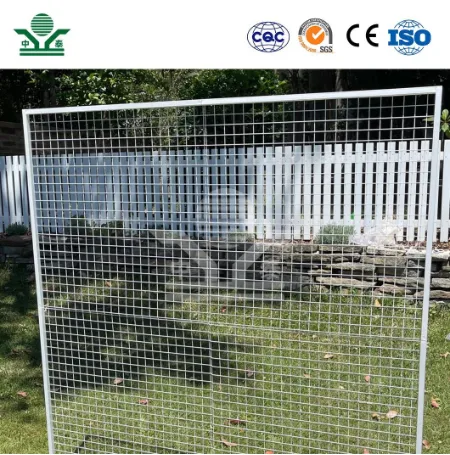The Significance of Stair Grating in Modern Architecture
In the realm of modern architecture and design, every element plays a crucial role in functionality, safety, and aesthetic appeal. Among these elements, stair grating has emerged as a vital feature that deserves attention. It serves not only practical purposes but also contributes significantly to the overall design language of a building.
Understanding Stair Grating
Stair grating refers to a type of flooring or surfacing applied to stairs, typically made from metal, plastic, or composite materials. Its primary function is to provide traction and prevent slipping underfoot, especially in environments where moisture or debris might create hazards. Grated surfaces allow water to drain through, minimizing pooling and the risk of accidents.
The designs of stair grating are available in various patterns and materials, catering to different architectural styles and safety requirements. While traditional materials like wood and concrete are still widely used, the demand for grating solutions that enhance safety and design aesthetics has led to the introduction of advanced materials. Metal grating, for example, is popular for its durability and modern look, often used in outdoor or industrial settings.
Safety Benefits
One of the foremost reasons for incorporating stair grating into architectural design is safety. Statistics indicate that a significant percentage of falls in commercial and residential buildings occur on staircases. Stair grating significantly reduces this risk by providing superior traction compared to smooth surfaces. The perforations or grid-like design enable excellent grip, allowing users to maintain their balance, especially in high-traffic areas.
Moreover, stair grating effectively diverts water away from the surface, thus reducing the chances of slip-related accidents. Whether in wet weather conditions or areas prone to spills, a grating surface can be a lifesaver. This safety feature is especially crucial in public buildings, commercial properties, and outdoor environments.
Aesthetic Appeal
stair grating

Beyond functionality, stair grating has found its place in the aesthetic aspects of architecture. Designers are increasingly recognizing the aesthetic potential of grating systems. The visual complexity created by the interplay of light and shadows through the grating can enhance the overall ambiance of a building. Various coatings and finishes can also be applied to grating surfaces, allowing for customization in alignment with a building’s design philosophy.
Incorporating stair grating can evoke a sense of modernity and innovation. For instance, minimalist designs utilize metal stair grating, creating an industrial yet sophisticated look that resonates with contemporary trends. In contrast, more decorative grating can be employed to harmonize with traditional architectural elements, providing a visually appealing transition between old and new.
Sustainable Considerations
As sustainability becomes increasingly essential in modern construction, stair grating made from recycled materials is gaining traction. Manufacturers are now producing high-quality grating made from recycled plastics and metals, minimizing the environmental impact. This approach not only supports sustainability efforts but also reduces costs associated with raw material extraction.
Furthermore, the open design of stair grating promotes airflow and natural light penetration, reducing the energy needed for artificial lighting in stairwells and adjacent areas. This energy efficiency aligns with the green building movement, making grating a practical choice for eco-conscious architects and builders.
Conclusion
In summary, stair grating is more than just a functional solution to slippery stairs; it plays a multifaceted role in modern architecture. With its inherent safety benefits, aesthetic adaptability, and potential for sustainability, stair grating represents a perfect intersection of form and function. As architects and designers continue to prioritize safety, aesthetics, and environmental responsibility, stair grating will undoubtedly remain a significant component in the architectural landscape.
Incorporating stair grating into design not only enhances safety but also allows for creative expression through various materials and finishes. As we move forward, the importance of these seemingly simple design choices will only grow, reinforcing the idea that every detail in architecture contributes to a better, safer world for those who inhabit these spaces.
-
The Best Metal Mesh Solutions: Expanded Aluminum Metal vs. Expanded Stainless Steel Metal
NewsSep.10,2024
-
Round Perforated Sheets vs. Hexagonal Perforated Sheets vs. Embossed Perforated Sheet Metal
NewsSep.10,2024
-
Perforated Metal Sheets
NewsSep.10,2024
-
Experience The Excellence Of Stainless Steel Grating
NewsSep.10,2024
-
Discover the Versatility Of Metal Mesh Expanded Forming Machines
NewsSep.10,2024
-
Discover The Advantages Of Steel Grating For Sale
NewsSep.10,2024
Subscribe now!
Stay up to date with the latest on Fry Steeland industry news.

